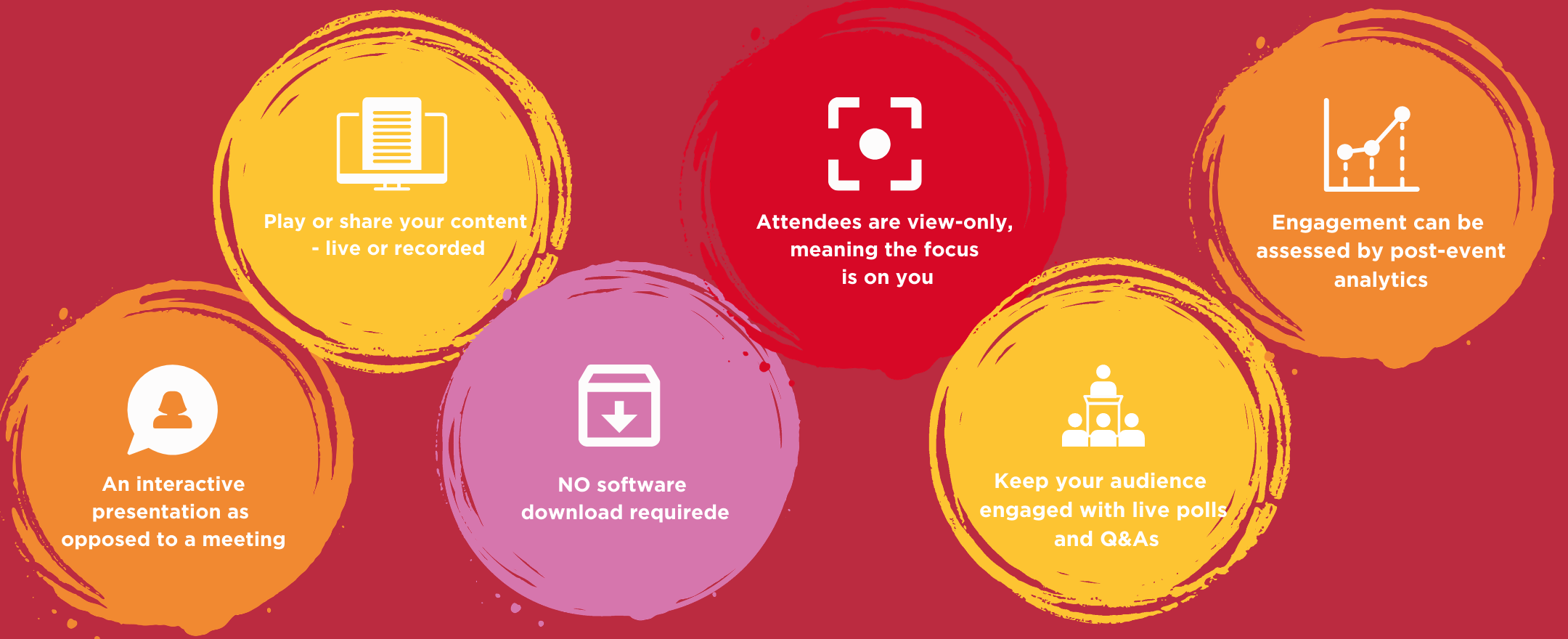Whilst we have all had to come to terms with the recent cancellations and postponements of face-to-face events, the current climate has opened up a wealth of digital alternatives. In our previous blog, we explored how some big events for the team have now moved to digital platforms, one of which is webinars.
Webinars can bring vast value to business communications – even more so during the current need for increased remote working. You’re probably asking how can a webinar truly benefit your organisation? The answer is simple, they are used to connect, engage, and interact with external audiences. You can use them as an opportunity to not only launch and demonstrate new products and services, but also feature expert speakers from your organisation, delve into business line discussions and trends, as well as share any industry and company news with key stakeholders.
The benefits are impactful and wide reaching, with webinars enabling businesses to:

What makes a webinar so unique?
Of all the multimedia presentation channels and options available, from podcasts and webcasts to simple pre-recorded videos, webinars stand out about the rest. Here’s why:

But there are so many platforms to choose from…
This is true, and it’s easy to get bogged down with the multitude of different features, pricing models, and good old word of mouth. Some will rate one, others with slate it, so how do you select the most effective tool?
Since lockdown began, we’ve trialled the good, the bad, and the ugly when it comes to webinar platforms! To save you the same hassle, we’ve collated some of our key considerations to take into account when searching for the best option to host your webinars on:
- Good quality sound and video – there’s nothing worse than struggling to hear or watch a buffering face!
- A clear and user-friendly interface – make it as simple as possible for attendees to register and watch
- Branding capabilities – to show off your brand and keep it front-of-mind
- Multi-speaker gallery view – webinars are far more engaging when you can see all speakers at once
- Customisable email invitations and reminders – to save you extra time and effort while keeping webinar updates on-brand
- On-demand and recording options – for anyone who is unable to attend, or for you to use later as content
- Control over hosts and attendees – so you are 100% in charge!
- Interactivity tools e.g. polls, Q&A, chat room – to keep attendees engaged and provide interesting insights
- In-webinar video and screen-sharing – to enable smooth presentations
- Reporting and analytics – to measure and learn from the success of your webinar
- Data integration – to get an export of attendee information for use in future comms
- GDPR compliance – because you have to!
“Can’t we just use Zoom?”
This is a question we’ve been asked several times, and the short answer is “no”. The slightly longer answer is “you can, but it won’t be anywhere near as effective or worthwhile.”
While you may be much more familiar with platforms such as Zoom, Teams, or Webex since these have become the new boardroom meeting or coffee catch-up, these aren’t fit-for-purpose if you’re planning a webinar. These tools are designed to be collaborative discussions, with all participants having the same capabilities. Therefore, the scope and impact drops dramatically if using such tools for an online knowledge-sharing presentation or event. Some of the main limitations include download requirements, lack of branding capabilities, limited control over attendees, no automated invitation and reminder systems, and restricted analytics access.
Suffering from webinar stage fright?
Running your webinar doesn’t need to be a daunting task. It’s a simple and cost-effective approach to engaging with your current and prospect audiences, as well as industry peers. With the right platform, speakers, and subject matter, you can’t go wrong! Are you ready to get stuck in?
We would be delighted to work with you in the planning, organisation, promotion, and execution of your webinars. For a demo of our preferred platform and to see how we can support you, get in touch here.








